In 1853 Arch Hall (1831-1927) and his brother-in-law, Roger Tandy (1806-1898), left Kentucky with their families and slaves to go to Texas. They traveled in covered wagons, and miles were hard-won. The two families had to clear their path much of the way. According to a history of Poly prepared in 1933 by students at D. McRae Elementary School, Hall later told of one day on the trail when so few miles had been traveled by nightfall that Hall sent his slaves back on foot to get embers from the campfire of the previous night to start that night’s campfire. In 1855 Hall and Tandy settled on land grants (probably Peters Colony) four miles east of the small civilian settlement of Fort Worth.
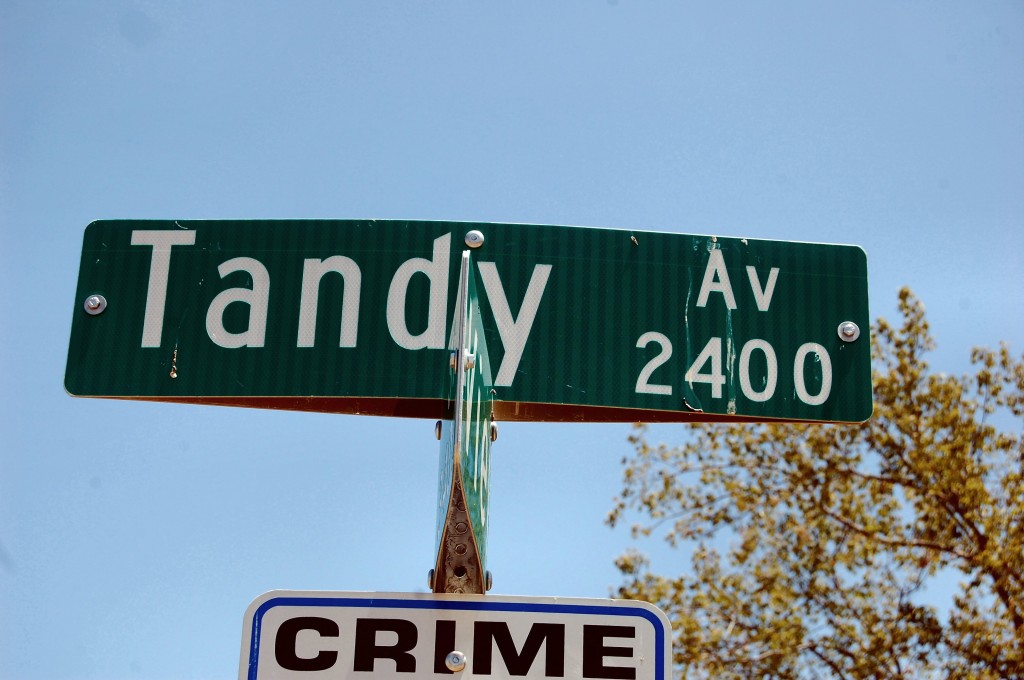
The Tandys and Halls settled just east of where Texas Wesleyan University is today on a prairie covered with grass almost as tall as a man. The town of Polytechnic Heights would grow from the roots these two families put down in that prairie sod.
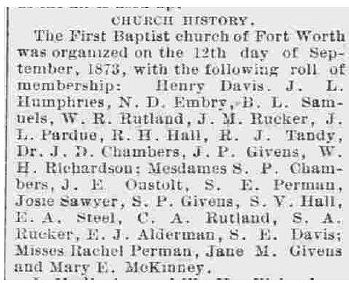
Roger Tandy was a charter member of Fort Worth’s First Baptist Church, along with Baldwin Samuel. The church was founded in 1867 by Reverends W. W. Mitchell and Asa Fitzgerald. The church reorganized in 1873.
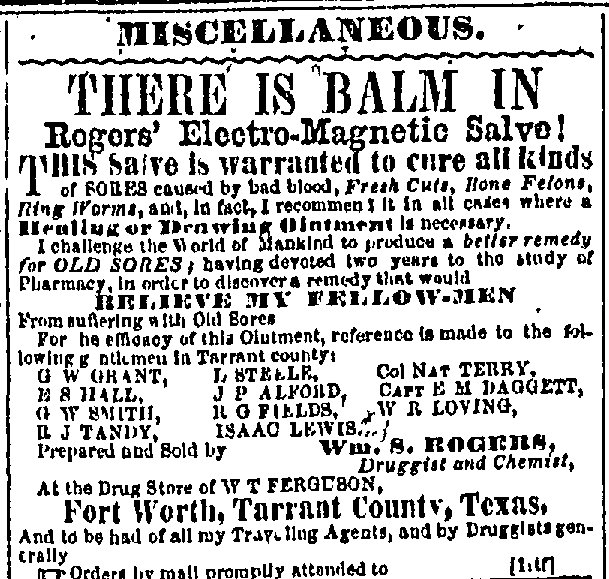
This is a rare mention of Roger J. Tandy in print. This ad in the July 20, 1859, Dallas Herald for a patent medicine includes endorsements by Tandy, Lawrence Steel, Nat Terry, Ephraim Merrell Daggett, and W. R. Loving, who about 1849 settled on a 640-acre headright claim on Sycamore Creek.
Tandy developed a vast ranch. Cowhand Tom Garrett later recalled in a Federal Writers’ Project interview: “I was born on the Tandy Ranch, right up the crick from where the big white house at Tandy Lake now is. ‘Twas on November the 10th, 1885, when the ranch was so big it runs from somewhere in where Poly is now to the other side of where Handley is now. In the days I’m talkin’ ’bout, ‘twarn’t no houses at all—just cow critters, grass, and mesquite bushes. The headquarters house was a double log house with a hall runnin’ between and a big rock chimney on both sides.”
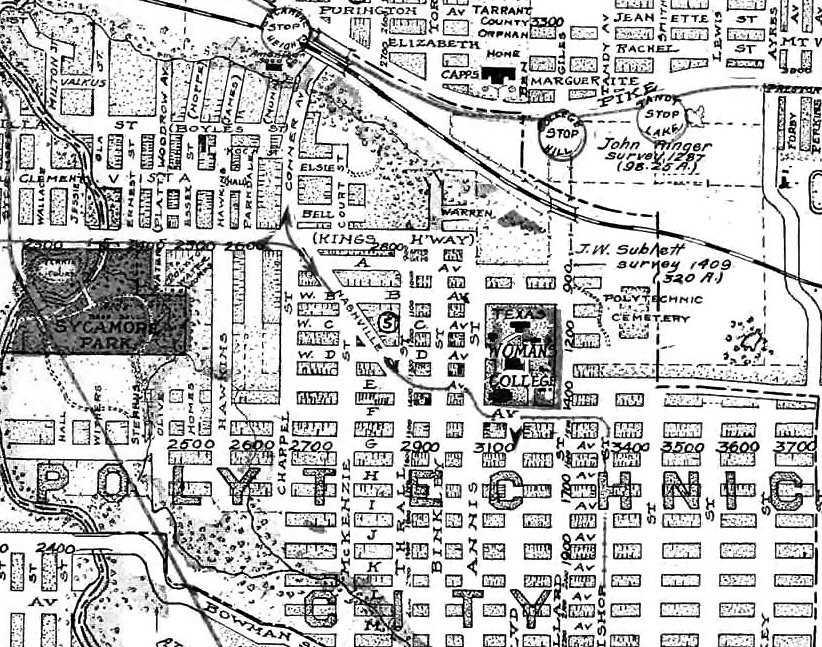 Roger Tandy dammed a creek on his sprawling ranch to create Tandy Lake in a low area where Lancaster and Ayers streets now intersect. The lake was a popular recreational area by the 1880s. The lake is shown just east of the Tandy Lake interurban stop on this 1920 Rogers map. (Map from Pete Charlton’s “The Lost Antique Maps of Texas: Fort Worth & Tarrant County, Volume 2” CD.)
Roger Tandy dammed a creek on his sprawling ranch to create Tandy Lake in a low area where Lancaster and Ayers streets now intersect. The lake was a popular recreational area by the 1880s. The lake is shown just east of the Tandy Lake interurban stop on this 1920 Rogers map. (Map from Pete Charlton’s “The Lost Antique Maps of Texas: Fort Worth & Tarrant County, Volume 2” CD.)

Bert Tandy, great-grandson of Roger, provided these photos of the shelter at the Tandy Lake interurban stop and the lake. Note the high embankment in the photo at right.
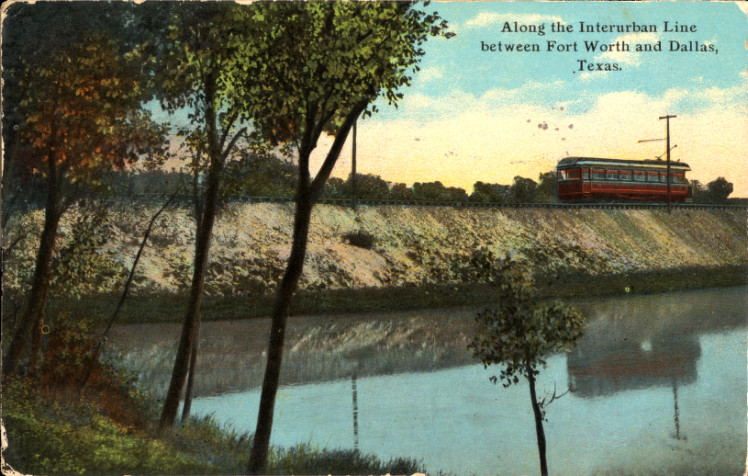 Is that high embankment the one depicted in this postcard of an interurban car passing a body of water?
Is that high embankment the one depicted in this postcard of an interurban car passing a body of water?

The “Tandy’s Lake” sign from the shelter remained in the Tandy family long after the lake and the interurban were gone.
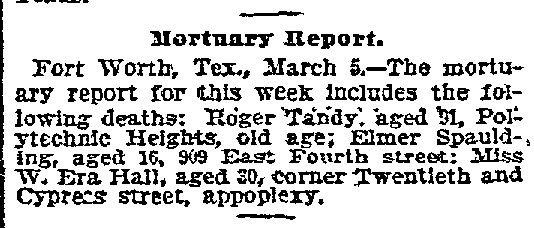 Roger Tandy died in 1898. Clip is from the March 6 Dallas Morning News.
Roger Tandy died in 1898. Clip is from the March 6 Dallas Morning News.
Roger Tandy’s son George (1846-1921) built a big house up the hill from the lake near Ayers at Hampshire Boulevard. George was a civic leader in the town of Polytechnic Heights. In 1890 he donated land for the campus that became TWU. In 1892 he helped start a streetcar line that ran from Polytechnic College to downtown Fort Worth through Glenwood. The streetcars originally were pulled by mules. Fort Worth incorporated Polytechnic Heights in 1922.
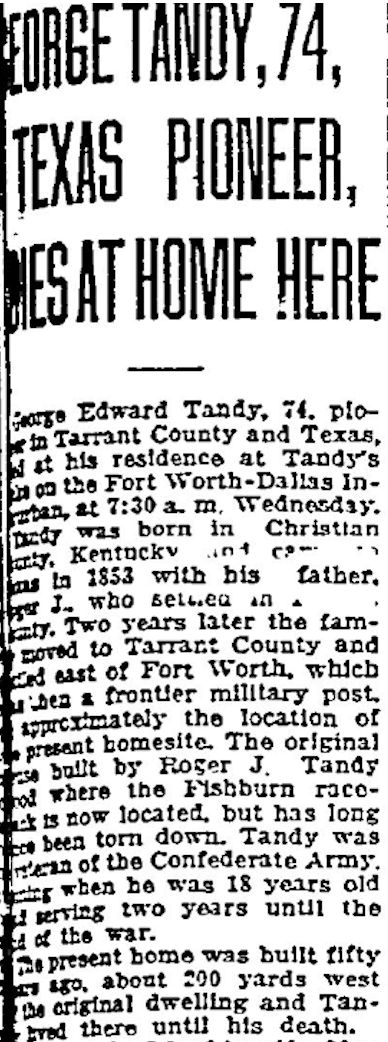
The obituary for George Tandy said little about his civic leadership. Clip is from the May 25, 1921 Star-Telegram.
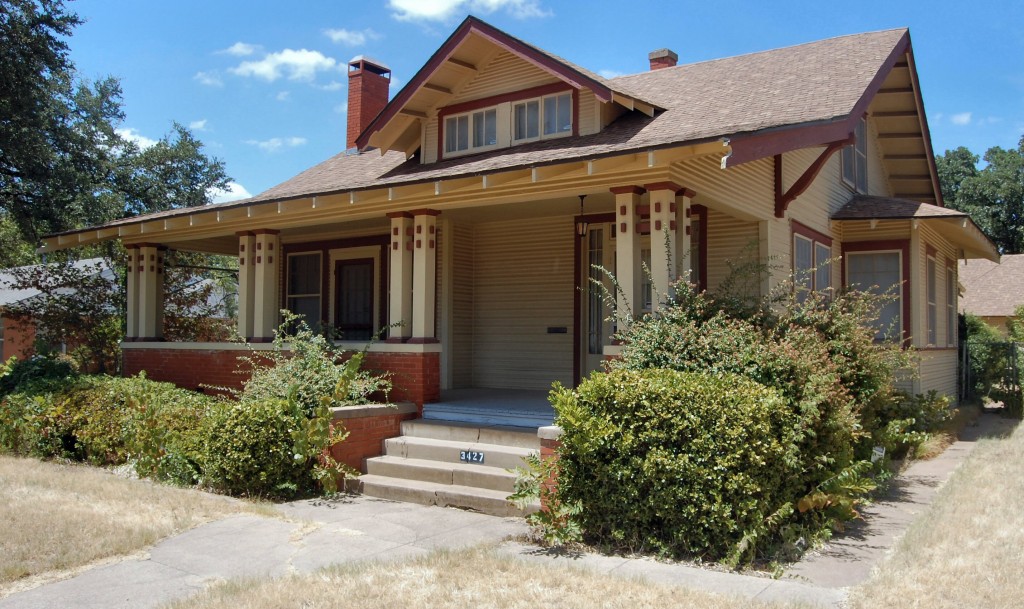 In 1912 George’s son Lewis Tandy built this home on Meadowbrook Drive on what had been the Tandy ranch. The home has remained in the family.
In 1912 George’s son Lewis Tandy built this home on Meadowbrook Drive on what had been the Tandy ranch. The home has remained in the family.
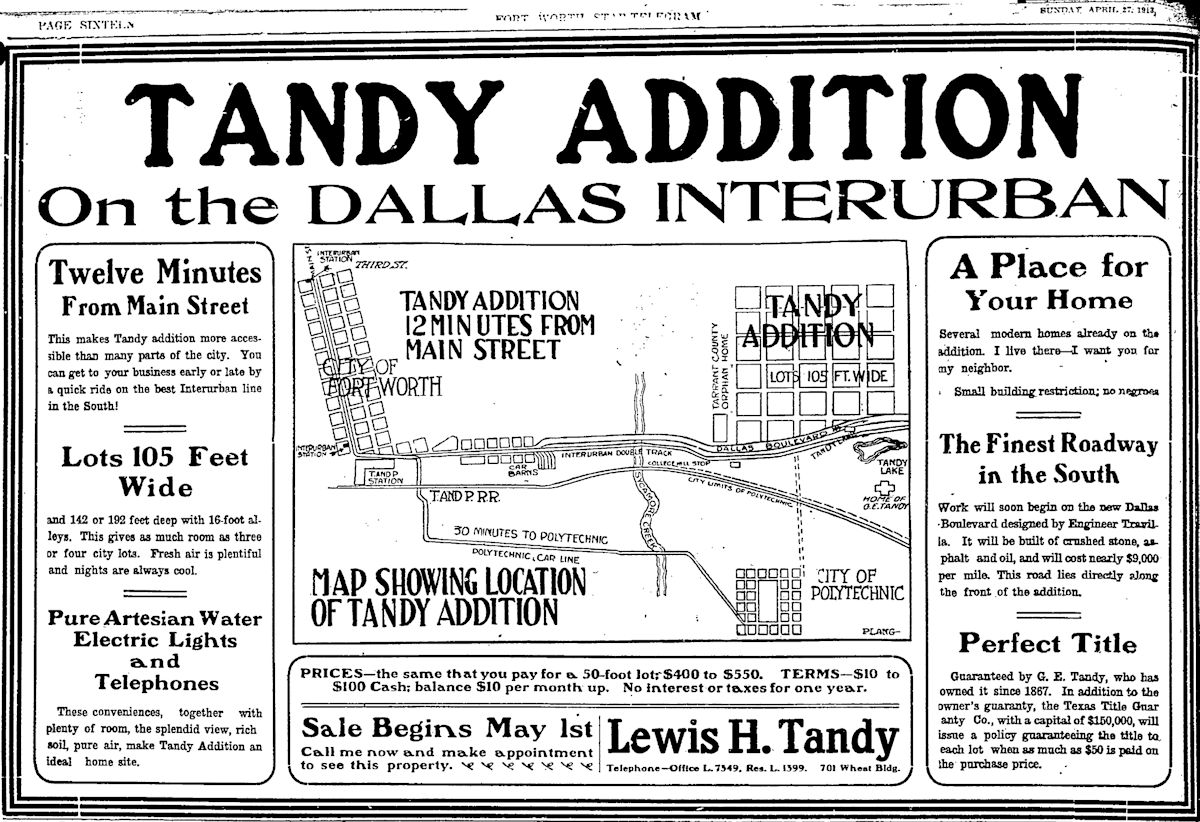 In 1913 Lewis Tandy developed the Tandy subdivision on part of the old Tandy ranch south of his home on Meadowbrook Drive. To the south of the new subdivision were Tandy Lake and Lewis’s childhood home. In the subdivision—with its “splendid view, rich soil, pure air”—were streets with the names of seven Tandy siblings and the Tandy surname: “Ben,” “Giles,” “Jeanette,” “Rachel,” “Marguerite,” “Annie,” “Lewis,” and “Tandy.” Today only Ben, Lewis, and Tandy streets survive with their original names.
In 1913 Lewis Tandy developed the Tandy subdivision on part of the old Tandy ranch south of his home on Meadowbrook Drive. To the south of the new subdivision were Tandy Lake and Lewis’s childhood home. In the subdivision—with its “splendid view, rich soil, pure air”—were streets with the names of seven Tandy siblings and the Tandy surname: “Ben,” “Giles,” “Jeanette,” “Rachel,” “Marguerite,” “Annie,” “Lewis,” and “Tandy.” Today only Ben, Lewis, and Tandy streets survive with their original names.
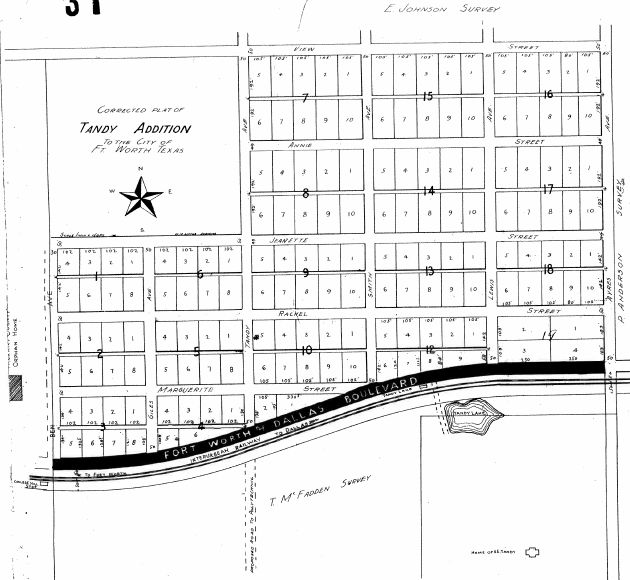
This plat, provided by descendant Caleb Tandy, shows the subdivision. Note Tandy Lake to the south.
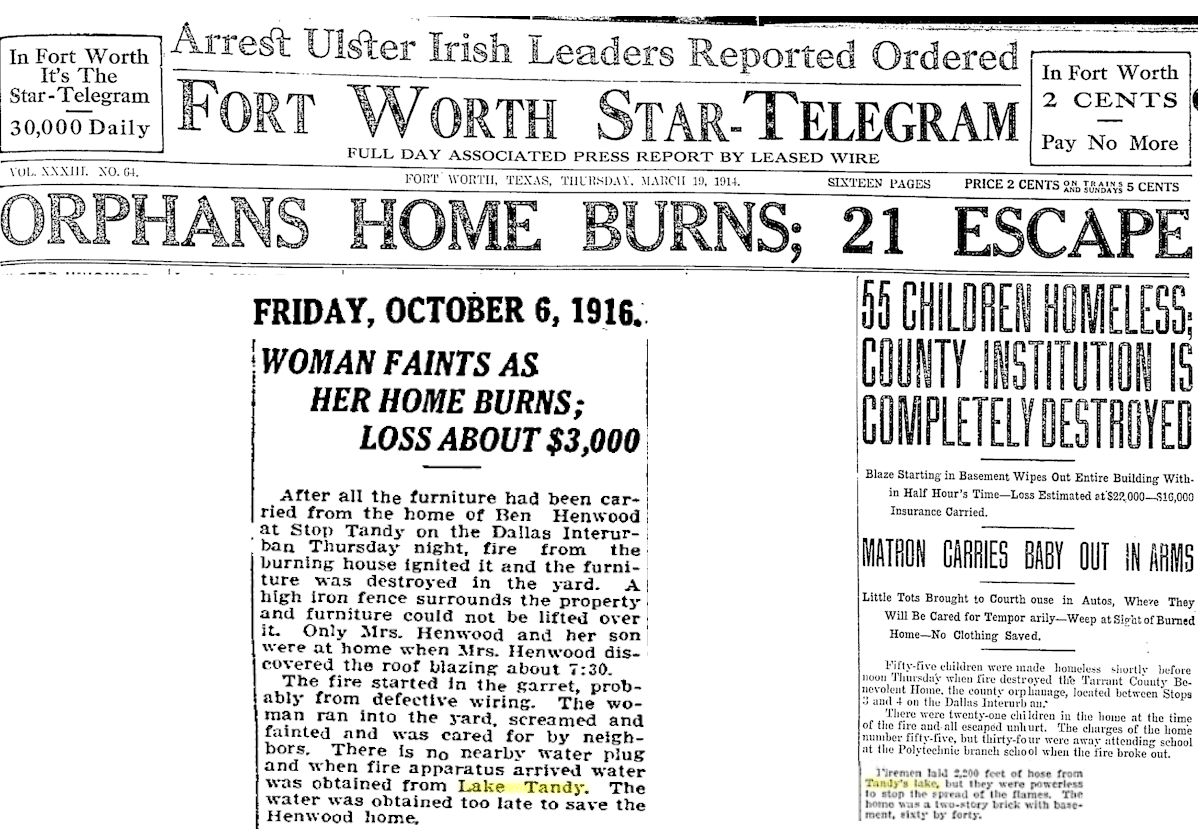
In 1914 and 1916 Tandy Lake provided water to firefighters in 1914 when the county orphanage—located just west of the Tandy subdivision—burned and in 1916 when a private residence burned. The Star-Telegram said the lake was drained in 1918 because of a flu epidemic.
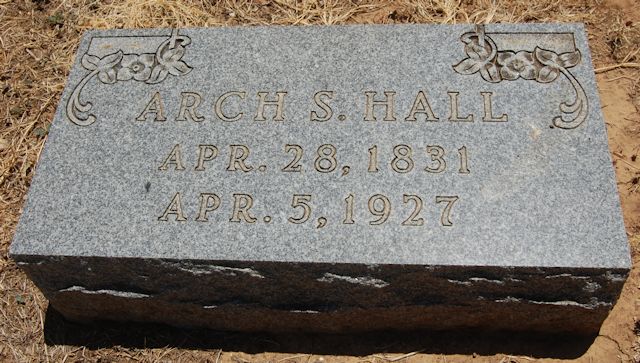
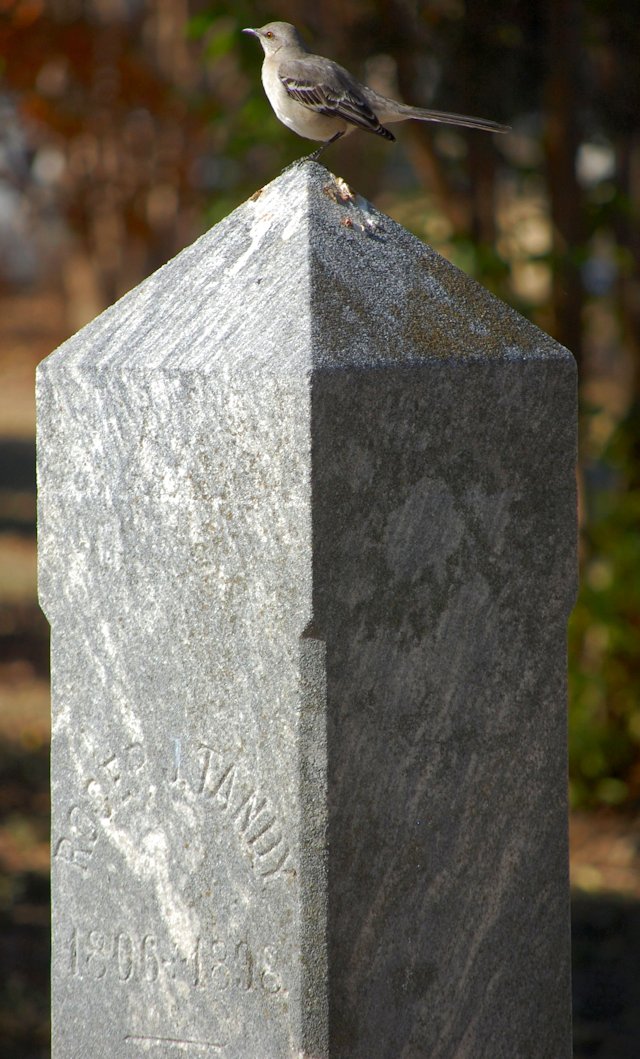 Arch Hall and Roger Tandy are buried in Pioneers Rest Cemetery.
Arch Hall and Roger Tandy are buried in Pioneers Rest Cemetery.
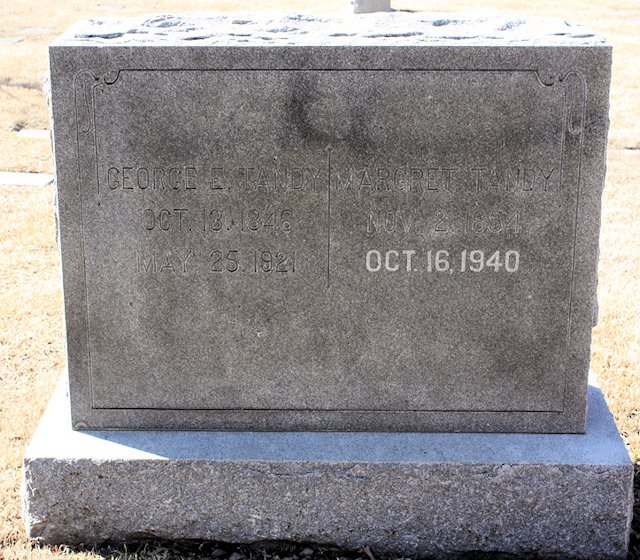
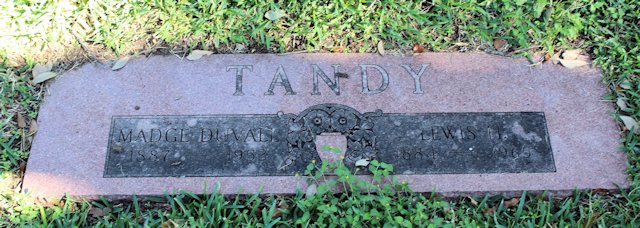 George Tandy and son Lewis Tandy are buried in Greenwood Cemetery.
George Tandy and son Lewis Tandy are buried in Greenwood Cemetery.
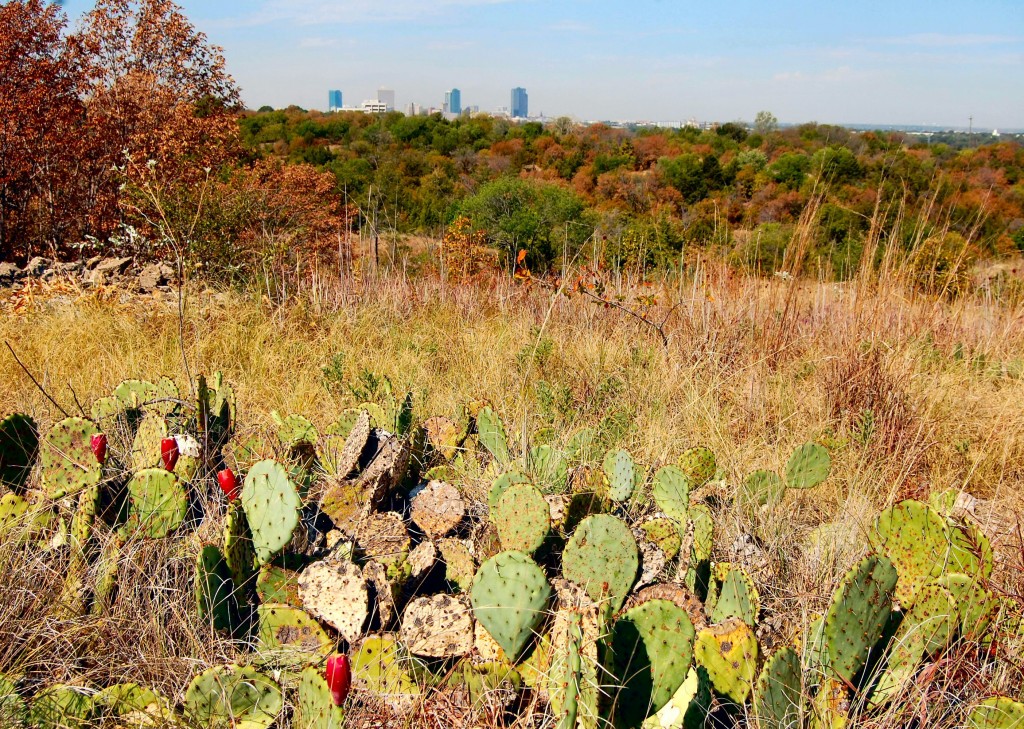
To get a view of the Poly prairie as Arch Hall and Roger Tandy first saw it in 1855, visit Tandy Hills Park. It is located at the intersection of streets named, appropriately, View and Tandy.






Hello I am the great-great grandson of Arch S. Hall. His daughter Eva Hall married Hubert Felix Leach. They had four children Sue, Mame, Hubert jr., and Elizabeth. Little Hubert died at the age of five. Mame had three children Thomas Bernard, John Hubert, and Bettie Sue. I’m the son of Bettie Sue. Thank you for the history.
Hi John, my name is Stephen Tandy (Steve). My father was Riley Ben Tandy, his father was Ben George Tandy, his father was George Edward Tandy. Bert and Susan Tandy came to Anchorage, Alaska for a visit some years ago when my mom and dad were still alive. I have a sister who lives in Vermont and my brother and I live in Anchorage Alaska since 1973. I found this website in my research about my roots. Do the Tandy’s have any reunions? It would be great to hear more about the cattle drives of the old days or anything like that.
Mike -
Would love to connect. Sorry I didn’t see your reply for so many months. Please let me know how we might connect. As you probably know, Lewis Jr. was my Dad, and Caleb is my nephew. Burt is still rolling along quite well.
JohnT
Have sent you an e-mail, John. Thanks for telling me that Burt is doing okay.
Mike -
I am a writer, filmmaker and urban planner - grew up on the East Side of FW - have spent many years in Los Angeles. Now in the Tandy House on Meadowbrook, built by my great-grandfather George for his son, Lewis, right by Tandy Hills Natural Area. Appreciate the great work you do. Would love to connect.
John, your surname is synonymous with East Side history, and Bert, Lewis Jr., and Caleb helped me in my research. I visited Lewis Jr. in your Meadowbrook Drive house and photographed the Tandy Lake interurban sign there. I still remember when a Poly classmate asked me if I’d ever heard of Tandy Lake in Poly. “You lie!” I said. “If there was a lake in Poly, I’d know about it.” I was wrong, and in the early days of the internet researching it was difficult. Because Poly was not yet part of Fort Worth, Poly did not get included in many maps. One aspect I have not written up yet is the story of Tom Garrett, an African American cowboy who was born on the Tandy ranch in 1885 when it stretched from Poly to Handley. Garrett said: “I was bo’n on de Tandy Ranch, right up de crick f’om whar de big white house at Tandy Lake now am.” He told that to a Federal Writers’ Project interviewer about 1937, so at least some vestige of the lake was still there then.
Pingback: The Garden Path Podcast
grew up at 728 essex st.,1964 grad. poly high,played football and love that school.
in the 1930’s my uncle floyd thomas open on old pike st.,tandy lake shop,there till he died in 1980’s
love that part of east ft.worth.
just my story,phil
By 1968 Floyd Thomas’s Tandy Lake auto repair and Tandy Lake laundromat were the only two Tandy Lake listings in the city directory.
Hi, I really enjoy your stories. This one is especially interesting to me. I grew up and still live in West Meadowbrook, and attended Tandy Elementary. In your posts about old schools (I can’t remember the title) it states that Tandy closed in 1970. I was in the class of 1971 so that isn’t right. I think it operated through at least 1975, but I can’t really remember.
Thanks, Raymond. That 1970 closing date comes from the Tarrant County Historical Resources Survey for the East Side but must be in error. I will change to “in the 1970s.
Love your Fort Worth stories! I spent my childhood on Meadowbrook Drive and attended G.E. Tandy Elementary. It must have been named after George Tandy. I had an idyllic childhood in East Ft.Worth.
Thank you, Cecilia. There is a photo of the school here: https://hometownbyhandlebar.com/?p=3279
My family lived for 19 years behind the Tandy home (pictured on Meadowbrook Dr.) Our house was on View and we enjoyed knowing Mr. and Mrs. Lewis Tandy Jr. Their children were grown and away from the family home when we lived there, and Mrs. Tandy doted on our young children. We truly enjoyed getting to know the family and our stay in Meadowbrook. The “view” from our front yard across to the Tandy Hills Park, was a joy to behold. This park is now the focal point of a group of Fort Worthians interested in keeping and returning it to the prairie like setting that was once there. Several of the Tandy family were involved in Scouting and I eventually met some of them at functions there in Meadowbrook/Easten Hills.
David, I am glad I got to meet Lewis and see “the” sign. And I was thinking the other day about that view and wondering if the Tandys, Halls, Lovings et al. could see smoke from the fort/town four miles away.
The Tandy Lake sign and Meadowbrook House still remain in the Tandy Family…and hopefully will for another generation or more.
Mr. Tandy, I am so glad to hear that. I got to meet your grandparents and take that photo of the sign and have been by the house since their deaths and hoped that it would stay in the family. When we dust Poly history for fingerprints, those of the Tandy family are everywhere.